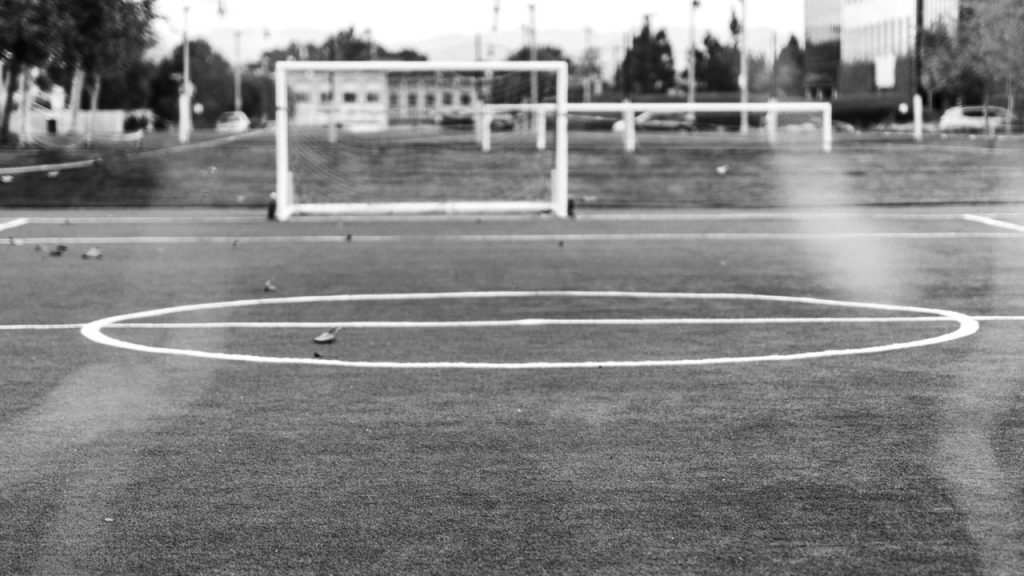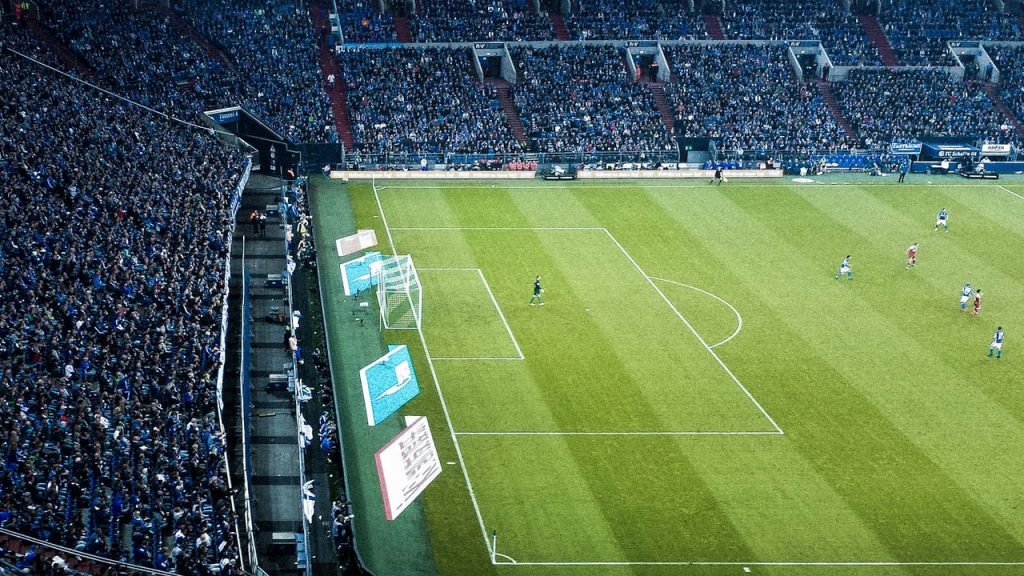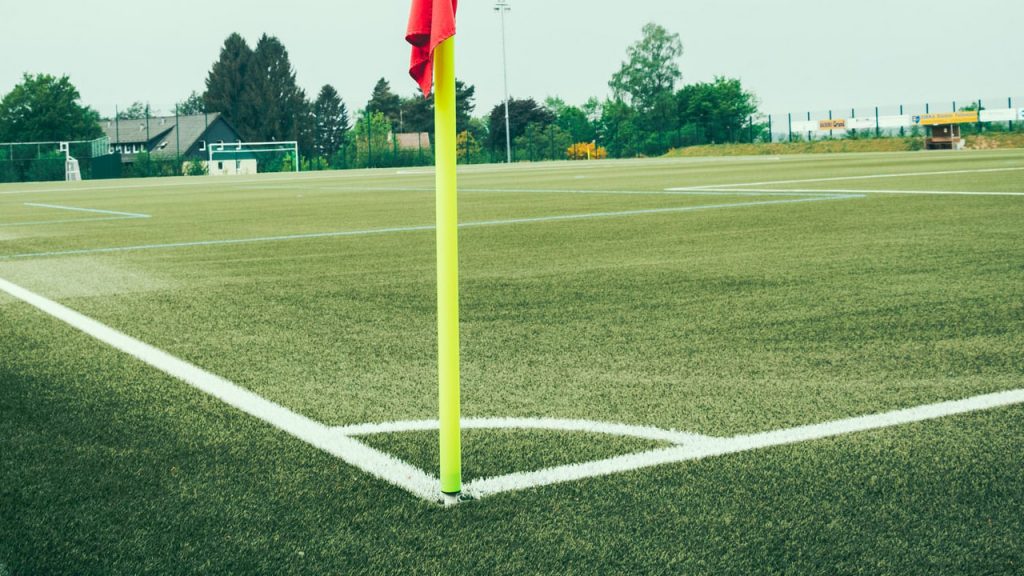Authority Soccer (authoritysoccer.com) is a participant in the Amazon Services LLC Associates Program, an affiliate advertising program designed to provide a means for sites to earn advertising fees by advertising and linking to Amazon.com. This site also participates in other affiliate programs and is compensated for referring traffic and business to them.
For those thinking that football is the most popular sport in the world, we have some bad news; with 517 million individuals across the globe tuning in for the 2018 World Cup Finals, soccer has the honor of carrying that title.
Even with all that popularity, few of us are aware of the official basics of this game. This is why we’re answering one of the fundamental questions about the game: What are the official FIFA soccer field dimensions?
The minimum length for the touchline is 90 meters, while the minimum for the goal line stands at 45 meters. The maximums stand at 120 meters for the touchline and 90 meters for the goal line. When it comes to international matches, the soccer pitch can range from 100 x 50 to 130 x 100 yards (100 x 64 to 110 x 75 meters).
Soccer fields can differ in size depending on the competition. Most of the time, the size of the field can be variable even in the same league.
However, certain FIFA standards need to be met by each stadium that this glorious game is played on.
The rest of this article will be the author’s attempt to entertain you by presenting those requirements, followed by a brief outline of the soccer field dimensions around different countries and leagues. Enjoy the reading!
FIFA Soccer Field Dimensions: A Deep Dive
With the basics of the soccer pitch dimensions out of the way, we can dive deeper into the dimensions of specific elements of the soccer field; what real aficionados want to know. Here’s what FIFA has to say about those dimensions:
Official Field Marking Dimensions

Even though it can be of different sizes, a soccer field must be rectangular and marked with continuous lines.
At the midpoint of the line that divides the field into two halves is the center point, around which a circle with a radius of 9.15 meters, or 10 yards, is drawn.
All lines need to be the same in width, which must not exceed 12 centimeters (5 inches). Both goal lines on the field have to be the same width as the goalposts and the crossbars.
Official Goal Dimensions
FIFA states that a goal must be placed at the center of each goal line. Approved materials must be used to build a structure that has 7.32 meters, or 8 yards, between the posts, as well as the height of 2.44 meters, or 8 feet, from the ground to the lower edge of the crossbar.
The goalposts and the crossbar must have the same width and depth, no larger than 12 centimeters, or 5 inches.
Official Goal Area Dimensions
According to the rulebook, two lines are drawn from the goal line, 5.5 meters, or 6 yards, from the inside of each goalpost.
Both of the lines extend 5.5 meters (6 yards) into the field and are then joined with a line that is parallel to the goal line.
Official Penalty Area Dimensions
Once again, two lines are drawn from the goal line. This time, they are 16.5 meters (18 yards) from inside of the goalposts.
The lines extend 16.5 meters (18 yards) into the field, where they are joined with a line parallel to the goal line. The penalty kick marker stands 11 meters (12 yards) from the midpoint of the goal.
Outside of the penalty area, an arc of a circle with a radius of 9.15 meters (10 yards) is drawn from the center of each penalty mark.
Official Corner Area Dimensions
Where the touchline and the goal line meet, marked with a quarter circle, is what we refer to as the corner area.
That quarter circle is drawn in the field of play and has a radius of 1 meter (1 yard) from each corner flagpost. What are the flagpost dimensions? Glad you asked:
Official Flagpost Dimensions
Each corner of the field of play in soccer is marked with a flagpost. This post has a minimum height requirement of 1.5 meters (5 feet).
Halfway lines can also be marked with flagposts, which are placed at least 1 meter (1 yard) away from the touchline and the field.
Official Technical Area Dimensions
The area in which team officials and players sit is called the technical area. Not all soccer venues have a designated sitting area of this type.
Those who do need to meet just a single dimension requirement: The technical area should only extend 1 meter (1 yard) from either side of the designated seated area and up to 1 meter (1 yard) from the touchline.
Soccer Field Dimensions Around the World

As mentioned several times in this text, soccer field dimension rules leave room for interpretation.
Setting the requirements that range from 90 to 120 meters in length, and from 45 to 90 meters in width, FIFA ensured that as many teams as possible are able to build stadiums that are up to standards.
Here are some of the leagues around the world and their typical soccer field dimensions:
Premier League Soccer Field Sizes
With 20 teams competing, England’s Premier League is one of the most interesting soccer competitions to observe.
Having that many teams mean that the differences in pitch sizes are inevitable. The majority of teams in England play on a pitch that is 105 meters (115 yards) long, and 68 meters (74 yards) wide. Some of the examples include:
- Arsenal (Emirates Stadium)
- Aston Villa (Villa Park)
- West Ham United (London Stadium)
Some teams, such as Manchester City, play on slightly bigger fields, while others, such as Sheffield United, built slightly smaller venues.
The difference in length and width between soccer fields in this league doesn’t exceed 3 meters. The biggest venue belongs to Manchester City, which is standing at 106 meters (116 yards) long, and just over 70 meters (77 yards) wide.
Major League Soccer Pitch Sizes
Far from being the most popular sport in the US, soccer still has a high following, with nearly 100 million people watching the last World Cup Finals from the States.
The US’ MLS consists of 26 teams, and their minimum soccer field dimensions stand at 100 meters (110 yards) in length and 65 meters (70 yards) in width.
However, the majority of teams play on pitches that are 105 meters (115 yards) long, and 69 meters (75 yards) wide. Some of the teams with soccer fields of this size include:
- Minnesota United FC (Allianz Field)
- Toronto FC (BMO Field)
- D.C. United (Audi Field)
The largest soccer field in the MLS belongs to Montreal Impact (Saputo Stadium), and it measures 110 meters (120 yards) in length and just over 70 meters (77 yards) in width.
A-League Soccer Field Sizes
A-League is Australia’s highest-level soccer league. It counts 12 teams in total; 11 from Australia and 1 from New Zealand.
Official data shows that the FIFA standards are maintained down under, with the average soccer field measuring 105 meters long, and 68 meters wide. Unfortunately, no data on specific stadiums is available at the moment.
Official Soccer Field Sizes for Children

As logic dictates, soccer fields dimensions can differ by age group that is meant to play on those fields. Let’s take a look at these:
Children Under the Age of 7
For this age group, the soccer field is 30 meters long and 20 meters wide. The goals are 2 meters wide, and 1 meter high.
Some rules for this age group are that a half lasts for 15 minutes, 4 players are allowed on the field, with no goalkeeper, and there’s no penalty area on the field. The ball used is a size 3.
Children Under the Age of 9
As the kid’s age, the field, the number of players allowed, and the time played all increase. The minimum field length for this age group is 40 meters, and the width is 30 meters.
The maximum for the soccer field is capped at 50 meters long and 40 meters wide. They’re playing for 20 minutes each half, with 7 players on both sides, still with the same-sized ball.
Children Under the Age of 11
For children under the age of 11, the minimum length of the soccer field is set at 70 meters, while the width is 50 meters.
The maximums are at 60 and 40 meters, respectively. Playtime is extended to 25 minutes per half, 9 players are in the game, and the ball is increased to a size 4.
Conclusion
Soccer is definitely one of the most popular pass times in the world, with an estimated 3.5 billion people enjoying the sport.
The majority of us sit in front of the TV, cheering our favorite players on as they kick the ball across the field, not even thinking about the majority of rules and regulations behind it all.
After familiarizing ourselves with the official FIFA soccer field dimensions and other data listed above, maybe we can all become just slightly more appreciative of the sport that has been around and growing for more than 2,000 years.

